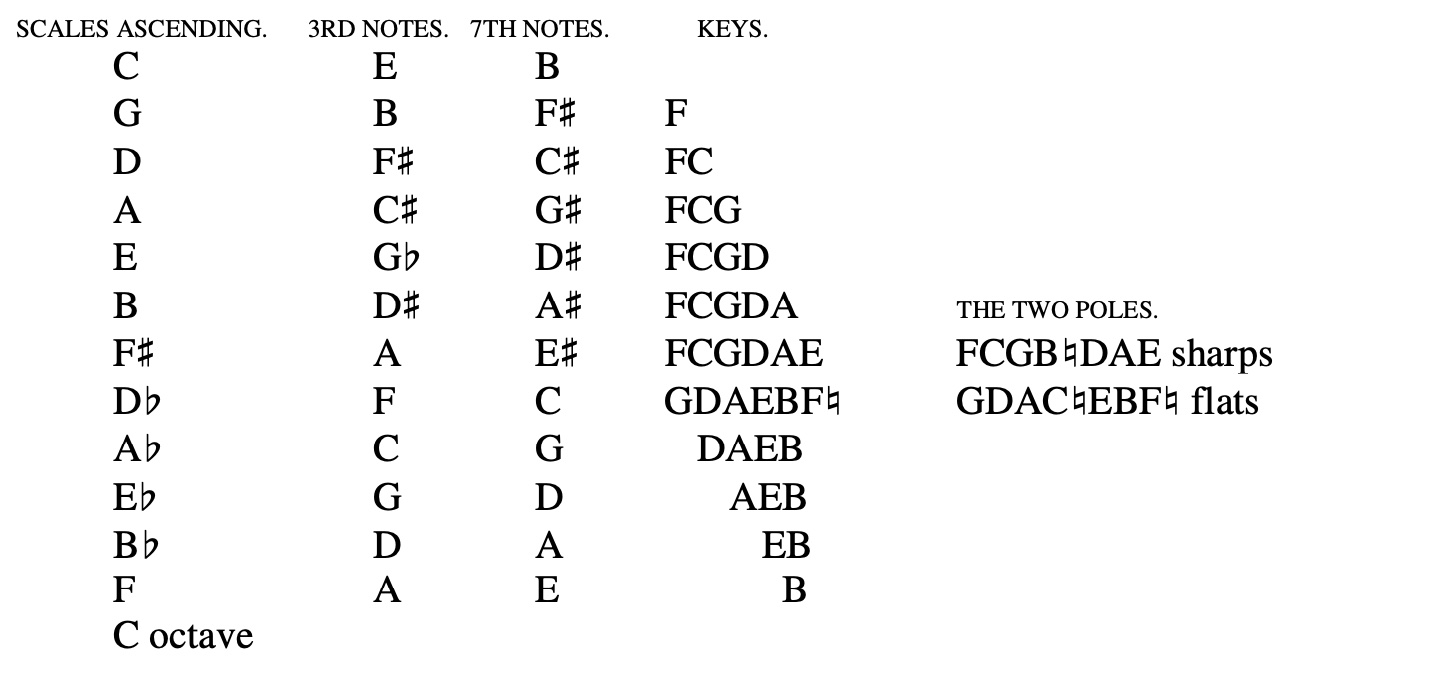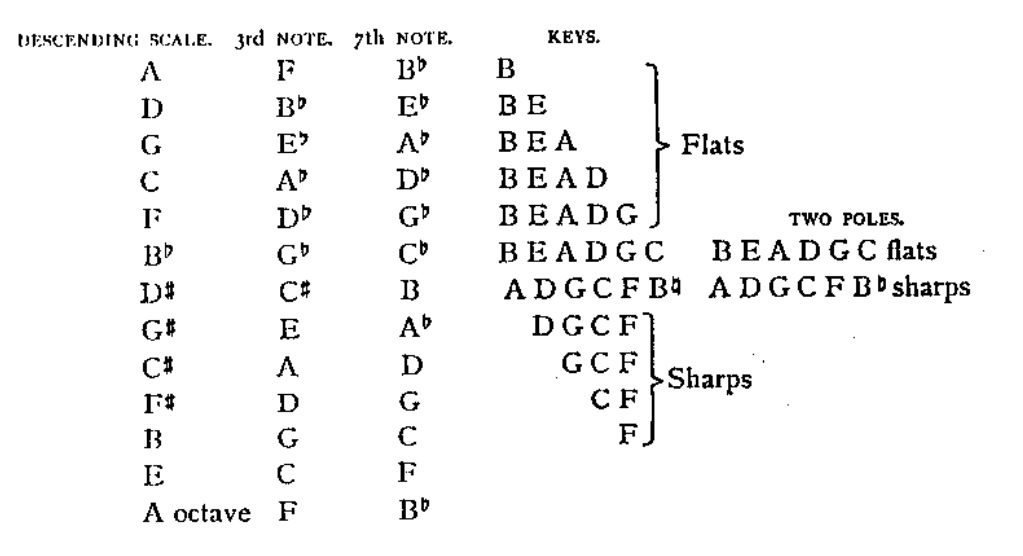Hughes
may be traced in the same way on the table; the third and seventh notes meeting, ascending and descending, sounding one harmony. [Harmonies of Tones and Colours, The Twelve Scales Meeting by Fifths, page 31a]

If we strike the ascending scales as written in musical clef again, beginning with the lowest A in the bass clef, we see that the second and sixth notes of each scale meet in higher harmony; the sharp or flat of the scale which varies from the seven notes of its harmony is written to each note. We descend as written in musical clef upwards; each third and seventh note meet in lower harmony, and thus all exactly agree in their mode of development. Having examined the scales as written in the table below, where the sharp or flat as before is marked to each note, but not to the keys, let us strike the key-notes, trinities, scales, and chords. The three harmonies of each key are written at the end of each line of musical clef. To descend, we follow the musical clef upwards, as before. [Harmonies of Tones and Colours, Diagram XIV - The Modulating Gamut of the Twelve Minor Keys by Fifths2, page 40]

The Minor Gamut modulating in the meeting of fifths through seven octaves. We may here trace the twelve, each fifth note becoming the higher key-note. But the sixth and seventh notes of the scale are discords. For example, in the key of A, the sixth note, F?, is a discord with the second note, B?; and the seventh note cannot be sounded as G# falling into the eighth, without being a discord with the third note, C?. No octave can be sounded in the Minor Scale, as it has risen into the fifth higher key of E. [Harmonies of Tones and Colours, The Minor Gamut Modulating in the Meeting of Fifths61, page 65]
See Also
eighth note
fifth note
first note
fourth note
Keynote
mathematical series of notes
Note
second note
seven notes
seventh note
six notes
sixth note
third note
thirteenth note
thirteenth note octave
twelve keynotes
twelve notes
